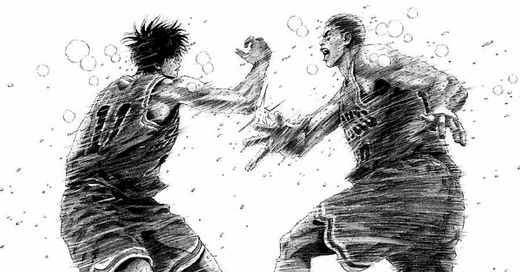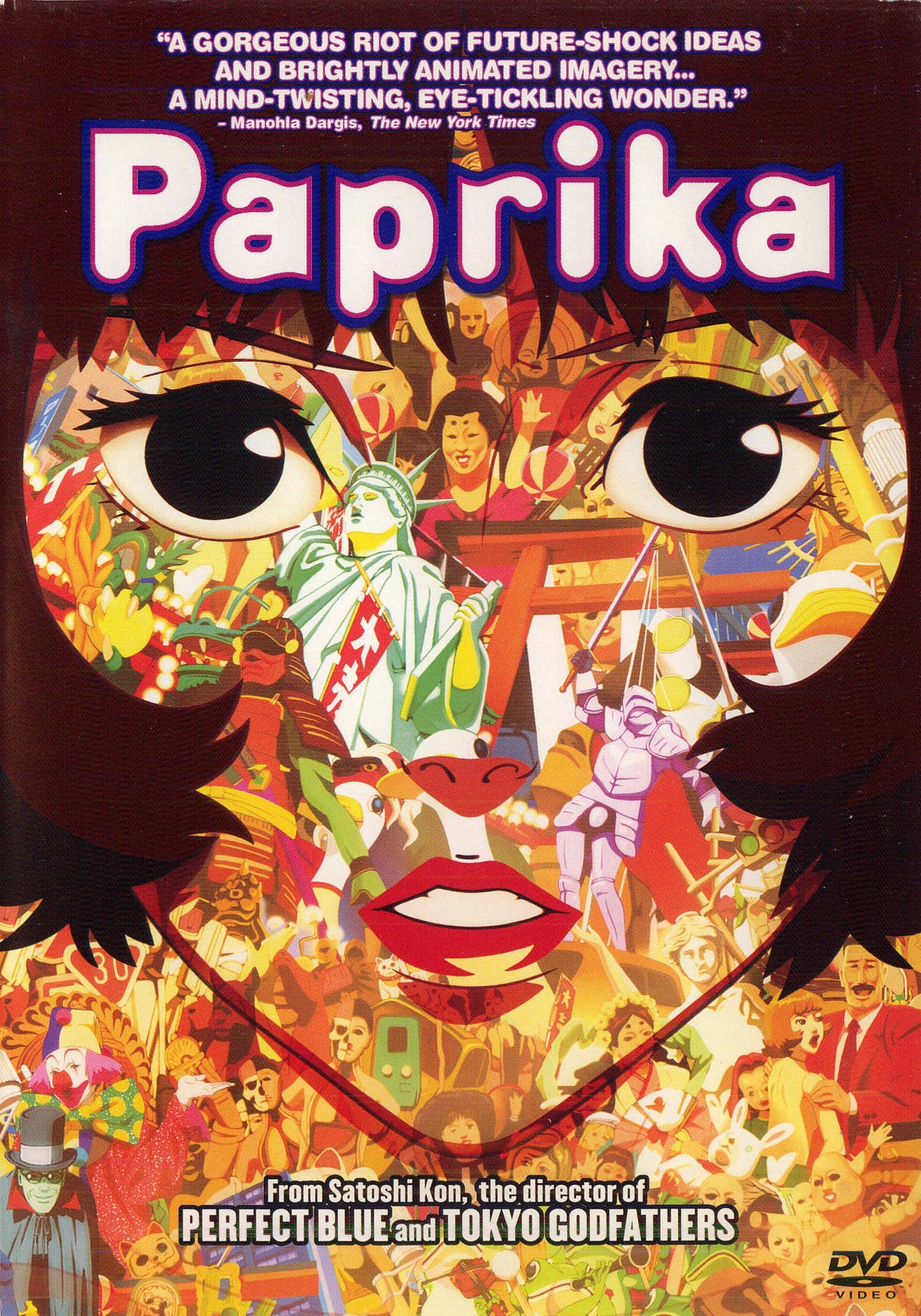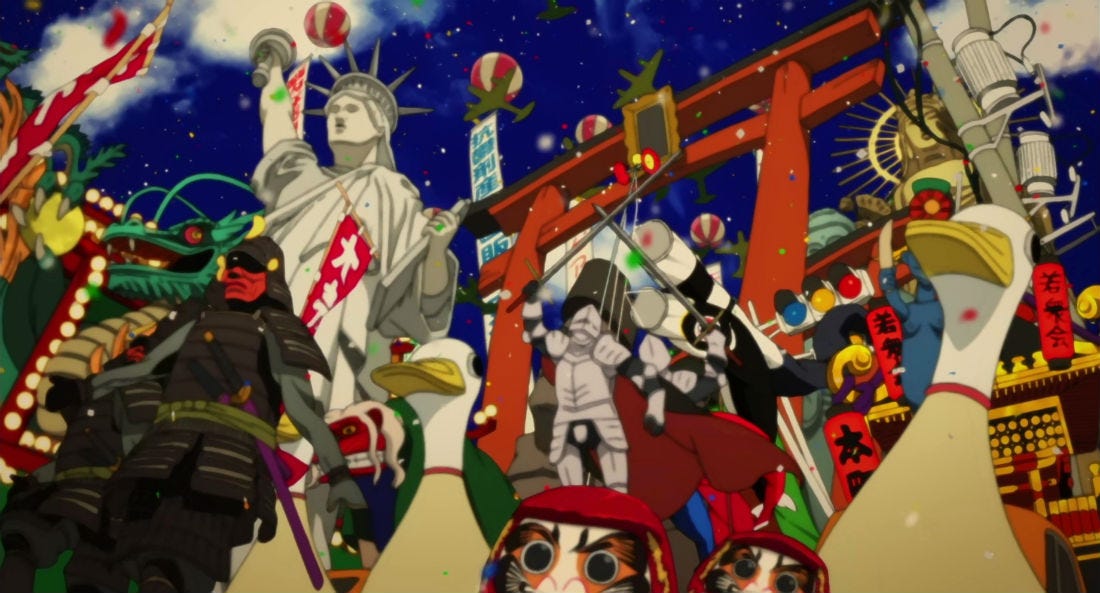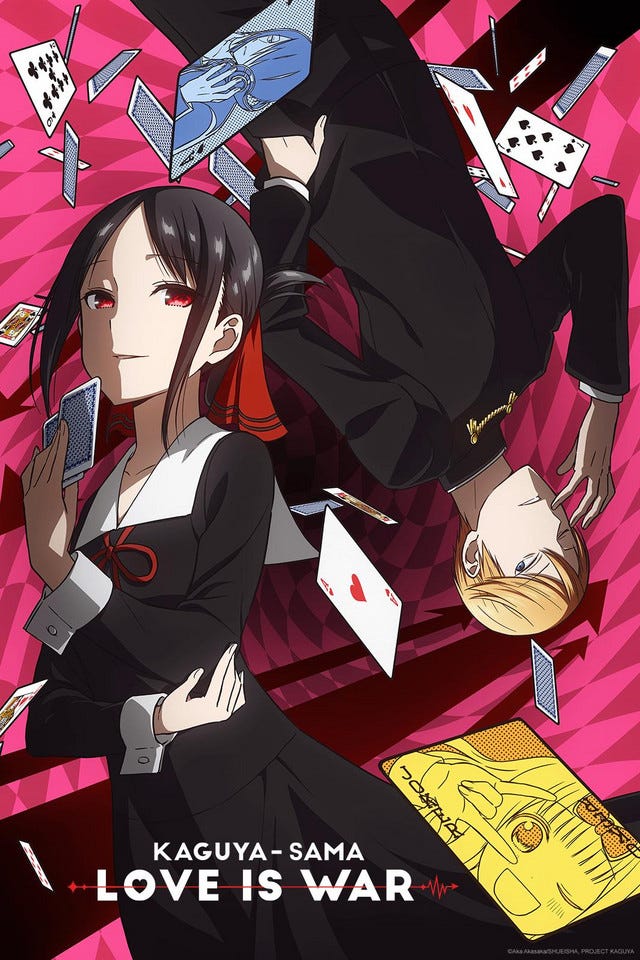Folks, let’s get a couple things out of the way.
First of all, I am not a weeb. According to Google, weebs cannot be Japanese. I am a Japanese American, which means I should be considered a semi- or demi-weeb.
So there.
Second, I know anime gets a bad rap. In many cases, deservedly so. Anime culture seems weird. Cosplaying seems weird. Figurines seem weird. Conventions seem weird. Body pillows are weird.
That being said, I wouldn’t say no to a body pillow of my boss. I will not elaborate on this point, other than to say that it would provide some much-needed spiritual sustenance.
Even the shows themselves are weird. Why are 90% of all anime set in high school? And why does the high school protagonist’s primary love interest look an elementary schooler? And why is the other high school protagonist’s primary love interest his younger sister?
Weird. Creepy, even.
And what the hell is manga, anyway?
Look, I’m not here to defend all of anime and manga culture. I just watch the shows and read the books, that’s it. I know jackshit about the anime community, and I’ve never involved myself in it. I don’t judge people who do, but it’s just not my thing.
But some of the anime I’ve watched and manga I’ve read are my thing. While I consider 98% of anime to be basically unwatchable, there are some real gems hidden amongst the remaining 2%. A handful of them are genuinely great works of artistic storytelling.
I don’t watch very much anime nowadays, and I can’t remember the last manga I read. The vast majority of that happened when I was in high school. But I’ve come across some really, really good stories over the years, and I think it’s a shame that the continual avalanche of shitty shows, combined with the weirdness of, and stigma surrounding, anime/manga culture prevents more people from checking the medium out.
The above is one of the most famous panels to appear in Inoue Takehiko’s manga series Slam Dunk. Slam Dunk was serialized in the mega-popular Weekly Shonen Jump from October 1990 to June 1996, and it has since sold over 185 million copies worldwide. In Japan, Slam Dunk has been regarded as one of the greatest sports manga series of all time and has been cited as contributing to the popularization of basketball among Japanese youth during the 1990s.
Slam Dunk also happens to be my favorite piece of media.
Ever.
I like it more than any novel I’ve ever read, any movie I’ve ever watched.
I’ve read Slam Dunk cover to cover five times, and I always cry at the same moments, lose my shit on the same panels. During my first read-through, I stayed up the entire night. The manga brings out my emotions in a way that no other narrative has.
I said I like Slam Dunk, but that was a lie. I love Slam Dunk. And I’m not ashamed to admit it. If you’re a certain kind of person, drawn to a certain kind of narrative, you have no choice but to love the series. That’s how exhilarating it is. How intense. How exceptional.
Like most anime and manga, Slam Dunk’s plot is relatively simple, and its characters are largely one-dimensional. Summary: high school basketball team tries to win nationals. The five team members, each with their own strengths and weaknesses, must learn how to work together. They face strong and unyielding opponents. Sometimes they win, sometimes they lose. But over time, they get better and better until the national championship is finally within their grasp.
In other words, it’s a classic sports manga, and it follows the genre’s narrative conventions to a T. It’s not doing anything revolutionary. For the most part, it’s nothing more and nothing less than what any sports manga aspires to be: pure hype.
Let’s consider Slam Dunk’s protagonist, Sakuragi Hanamichi. Sakuragi has two defining character traits. The first is that he’s a dumbass. The second is that he can jump really high.
Actually, I misspoke. I should have said that Sakuragi has two character traits, period, because being a dumbass and jumping really high is basically all he does throughout the series.
How simple. How juvenile. How shallow. How stupid.
And yet, Sakuragi is one of my favorite fictional characters, ever. I love Sakuragi just as much as I love Slam Dunk.
Why? Because over time, you see this dumbass Sakuragi, who only started playing basketball to impress a cute girl, slowly improving his game, contributing to the team, and ultimately falling in love with the sport. Sakuragi’s passion, sincerity, and joy bleed through each and every page, and since he is an absolute beginner compared to everyone else on the team, his successes are far and few inbetween and hit you like a truck.
So in the end, this high school basketball manga is about love. How one comes to love what they’re doing, the sacrifices involved with pursuing what one loves.
Is it cheesy? Yes. Would I hate Sakuragi if he appeared as a character in a Pulitzer-winning novel? Absolutely. Is Slam Dunk an example of nuanced, complicated, and transgressive storytelling? This is a rhetorical question.
And yet, I can’t tell you just how much I love the series.
I’ve read a lot of critically acclaimed novels. Some of them are said to defy and define literary conventions. I enjoy most of what I read.
Slam Dunk is not defying or defining any conventions. It’s a cookie-cutter story with cookie-cutter characters. But that’s part of what makes it so great. Slam Dunk doesn’t ask you to think. It just asks you to experience. To let Inoue’s exceptional art, immaculate pacing, and emotional highs wash over you like waves on a beach. It takes you back to a time when things were simpler, when your only goal in life was to beat your neighboring high school’s basketball team, when you had the time and space to dedicate your entirely to something that is ultimately transitory and meaningless.
In other words, it takes you back to your youth.
Some people think that anime and manga are meant for children. Why would they not be? Their characters are simple, their storylines are basic, and their narrative conventions are often unimaginative and hackneyed.
I agree. I have never encountered an anime or manga that, in my view, tells a genuinely “adult” story, although online message boards will have you believe otherwize.
But sometimes, you just have to tell adulthood and maturity to fuck off for a while. There’s enjoyment to be found in Jonathan Franzen’s multifaceted, ambiguous, and complex characters. But there’s also enjoyment to be found in Sakuragi’s repeated declarations that he’s a basketball genius while being unable to hit a layup.
Who cares if it’s juvenile as long as it’s enjoyable? That’s what I think, anyway. And as I’ve said, I’ve enjoyed Slam Dunk more than any other piece of media I’ve come across. If that’s not enough of a reason to love a work of fiction, I don’t know what is.
Satoshi Kon’s Paprika is my favorite film. And I don’t think it’s even close.
Kon has released several popular animated films, including Perfect Blue and Tokyo Godfathers. These, too, are worth watching.
But Paprika, based on a 1993 novel of the same name, is by far and away my favorite.
Why?
Basically, the animation is cool as shit.
Folks, I am a simple man. I see vibrant, trippy, and explosive animation, and that’s enough to push a film over the top.
Watching Paprika is like experiencing your first acid trip. The animation is bursting with a vitality that is fantastical, disorienting, and profoundly aesthetic. The colors fizzle and pop, the lines twist and contort, and the backdrops hum with a palpable chaotic energy. Here are some scenes from the film (apologies, I couldn’t find high-quality images online):
Trust me. When these images are moving, they’re utterly, certifiably insane.
The soundtrack, which combines human and electronic vocals, complements the film’s over-the-top, trippy imagery perfectly.
Paprika is a visual and auditory masterpiece. There’s not much more to be said on the matter.
Paprika’s narrative, on the other hand, is reasonably interesting but nothing special. It’s set in a future in which a device called the DC Mini allows users to view other people’s dreams. Dr. Atsuko Chiba begins using the device illegally to help psychiatric patients by assuming her dream world alter-ego Paprika. As Chiba spends more and more time using the DC Mini, the distinction between dreams and reality become increasingly blurred until they begin to merge into a single, pulsating whole. Add to this an unknown “dream terrorist” who uses the device to cause vicious nightmares in his victims, and you have the recipe for a strange, confusing, and occasionally grotesque story.
Neither Dr. Chiba nor any of the other characters that appear in the film are particularly multifaceted or complex. They exist, more or less, as backdrops for the crazily chaotic animation that surrounds them. The narrative is weird and twisted, but it didn’t leave much of an impression on me. Basically all I can remember from the film, which I’ve watched thrice, are its visuals and music.
But I adore Paprika. I think it’s awesome.
Does loving a film just for how it looks and sounds make me a simpleton? Honestly, I couldn’t care less if it does. I just like Paprika a lot. A lot a lot. Sue me.
Animation allows creators to transcend the traditional limits of storytelling. In Paprika’s case, this transcendence manifested as an electrifying visual spectacle that is impossible to recreate in films that feature real people and real places. Animation gives the middle finger to the laws of physics, and it ventures far beyond the constraints of the human body and mind. It can be flagrantly, unabashedly unrealistic. Generally speaking, the medium is over-the-top in a major way.
I know this can be a big turn-off for some people. Fair enough. But I urge you to give it a shot. Paprika is only an hour and a half long. If nothing else, I guarantee you haven’t seen anything like it before.
Am I embarrassed to be writing about Kaguya-Sama: Love is War? Yes and no. On the one hand, my mother has gleefully informed me that it’s one of the most popular anime amongst Japanese middle school girls. This statistic is a good indication of my current level of maturity.
On the other hand, I think it’s really, really funny.
As a side note, my favorite anime series of all time is Yuasa Masaaki’s Ping Pong. It’s a phenomenal series, both visually and narratively. But it’s also a sports anime, and since I’ve already written about Slam Dunk, I figured I’d change it up.
I binged Kaguya-Sama over several days in 2023. Its style, tone, and general vibe are worlds apart from Slam Dunk or Paprika. Kaguya-Sama is a high school rom-com featuring two exceptionally intelligent and talented students, Miyuki and Kaguya, both of whom are members of the school’s student council. They’re both into each other, but neither can build up the courage to ask the other one out. So, they resort to the most elaborate, convoluted, and utterly unnecessary methods to try to have the other person confess first. And since both Miyuki and Kaguya are essentially geniuses, they’re more than happy to engage in round after round of teenage 8-dimensional chess until their minds fizzle out like wet firecrackers.
Miyuki and Kaguya’s efforts are endearing and hilarious precisely because they are so blatantly ridiculous. They’re supposed to be the smartest people around, but they can’t see what is immediately obvious to the viewer: that their love interest is clearly and unmistakably interested in them as well. Without this knowledge, they pour their heart, soul, and mind into increasingly absurd, ludicrous, and petty mental duels that lead absolutely nowhere and mean absolutely nothing. Rinse, wash, repeat.
Is the show meant for middle school girls? Most likely. Do I think it’s one of the funniest pieces of media I’ve ever come across? Yes.
Anime often goes over-the-top, and Kaguya-Sama is no exception. It’s unrelenting dramatic absurdity serves as its primary comedic gimmick, and it works. I’ve only watched the series in Japanese, so I can’t speak to the English dub, but the dialogue between Miyuki and Kaguya is some of the funniest I’ve come across. We’ve all had experiences in which we overthink our every word and action in front of someone we’re romantically interested in, although for most of us, this probably occurred most during our teenage years. Kaguya-Sama dials this awkward self-consciousness up to a hundred and presents us with a story that is, in many ways, deeply nostalgic.
In other words, as with Slam Dunk, Kaguya-Sama brings you back to your youth. (Although saying so may be a little misleading given the demographic of its audience lol.)
It’s simple, stupid, and silly. You aren’t coming away from Kaguya-Sama with any new insights, any revelations about the human condition.
But I guess the point I’ve been trying to make throughout this post is that media doesn’t have to be “mature,” “sophisticated,” or “intelligent” for it to be enjoyable. For it to be great, even.
We consume media for a variety of different reasons. In my opinion, no one reason is better than another. Yes, sometimes I want to read or watch something that makes me ponder larger questions, that makes me stand up from my seat and say “Wow. This narrative was brilliantly and meticulously constructed. Wow. That character was so ambiguous and believable she actually seemed human.”
But I simply can’t deny the feeling of joy I experienced reading Slam Dunk and watching Paprika and Kaguya-Sama.
Why not watch to feel joy? Why not read to feel pleasure? Who cares if it isn’t critically acclaimed, if it isn’t “high art”?
All I can say is this. I’ve been reading a fair deal of award-winning novels recently. And none of them, not a single one, has been as enjoyable as Slam Dunk, Paprika, or Kaguya-Sama.
Folks, life is short. We might as well have a good time while we’re here. So, fuck the hoity-toity hipsters and the snooty, somber critics. Most anime and manga are garbage, but a select handful are truly, genuinely fun. And we could all use some more fun in our lives, no?










I love Kaguya-sama with no shame. I listen to Love Dramatic on a daily basis in Japanese and English. Shakespeare who? Ocean Vuong who? (Jk I love Ocean Vuong) But fr I've watched Perfect Blue three times and somehow it scares me shitless and Terrifier 3 doesn't.